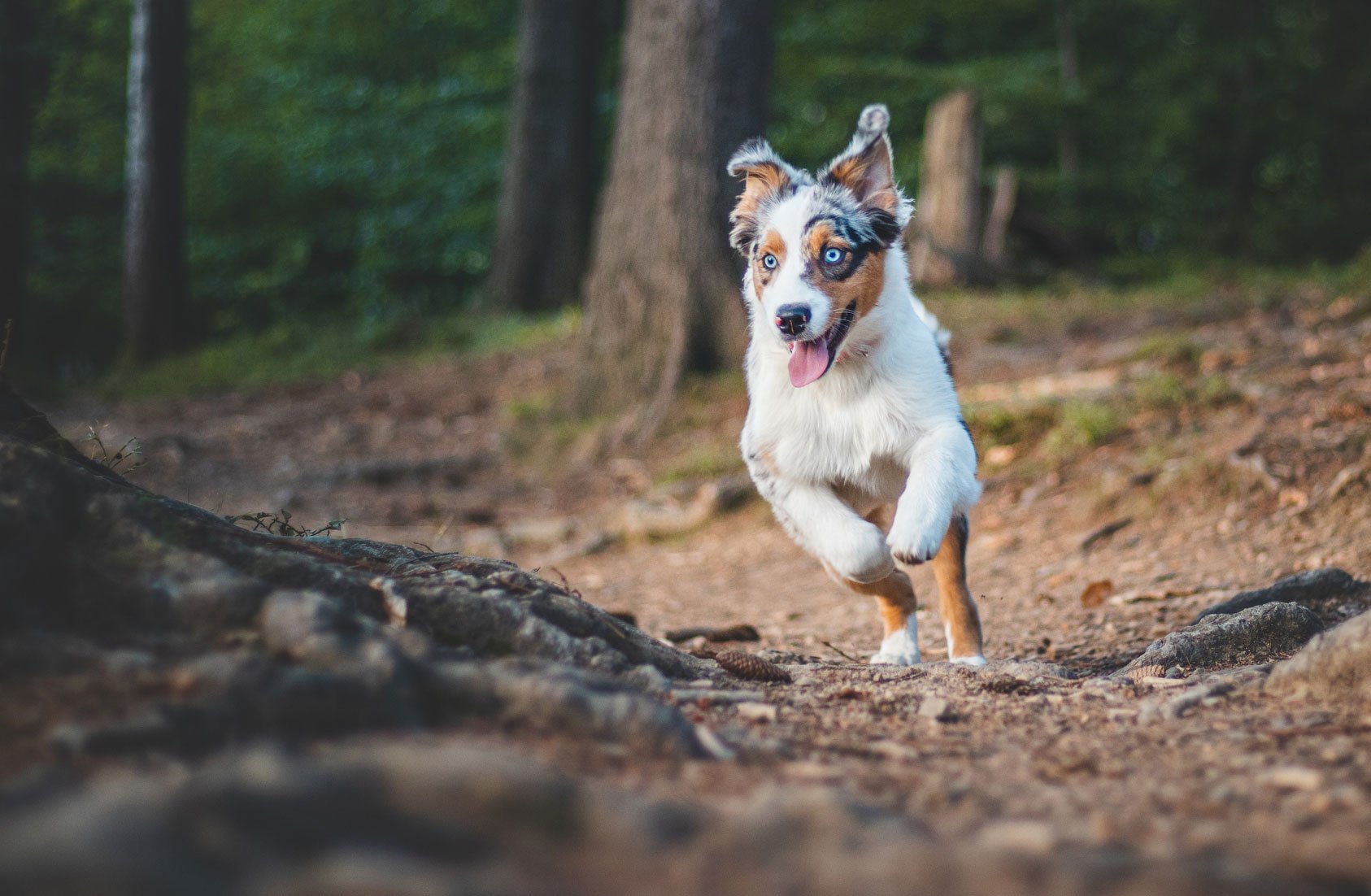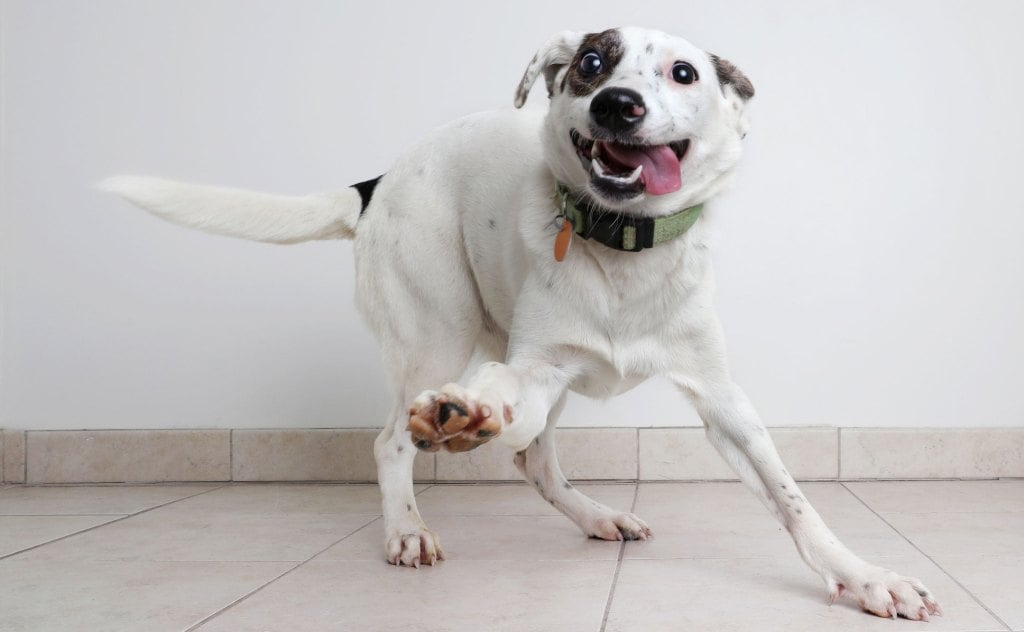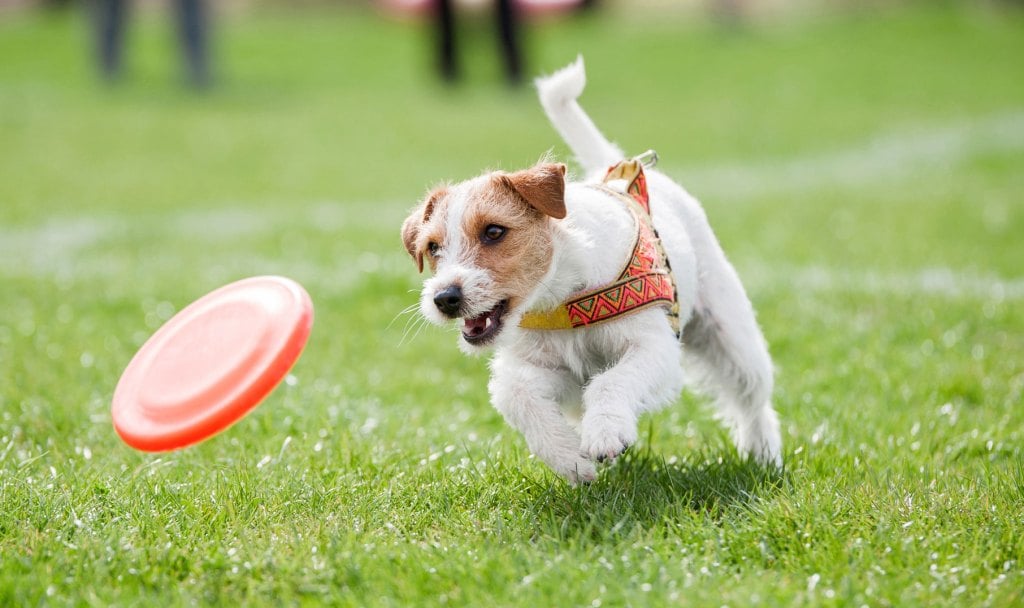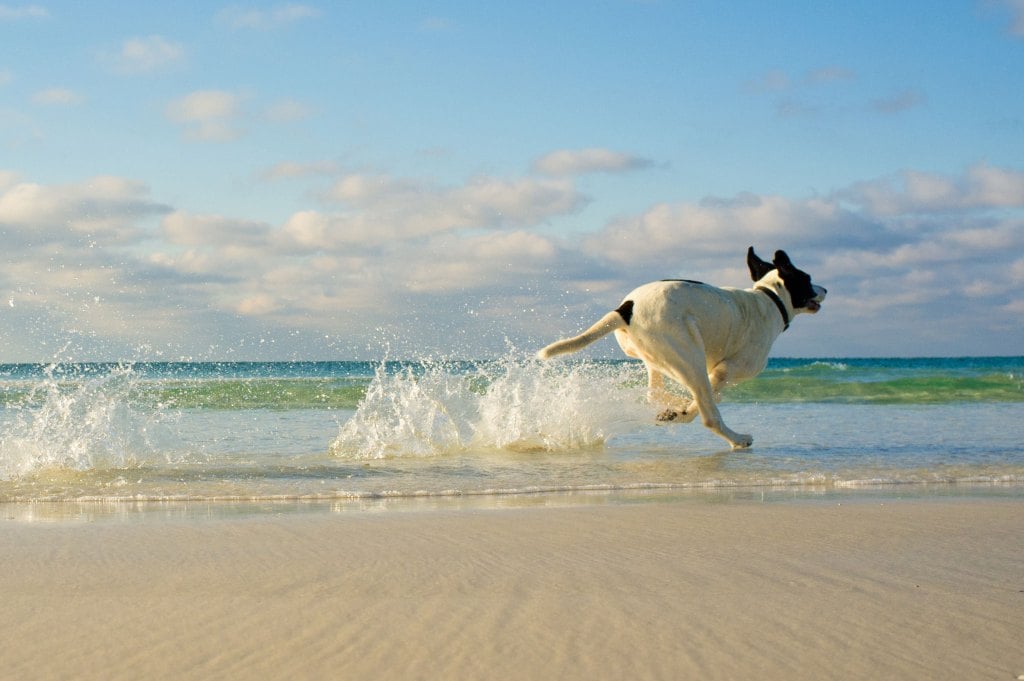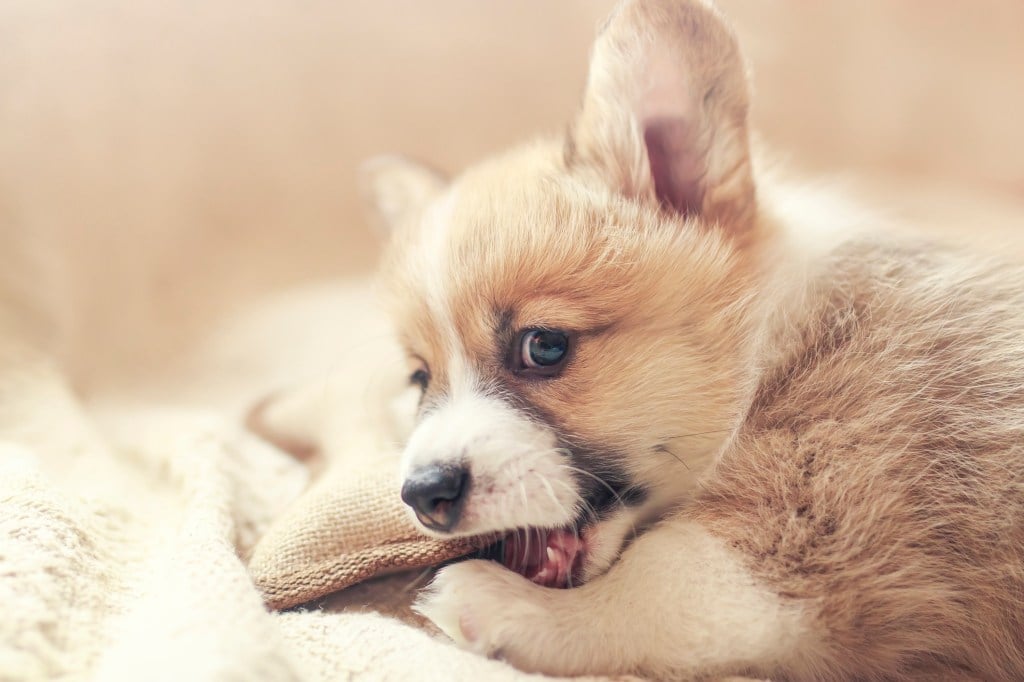Key Takeaways
- Dogs may be hyperactive for various reasons – from genetics to insufficient exercise and mental stimulation.
- Hyperactive dogs can cause trouble for their pet parents, from constantly demanding attention to destroying household items.
- You can take some actions to help a high-energy dog, such as increasing vigorous activity and training for calmness.
Table of Contents
So, you’ve brought home a new dog, maybe a high-energy breed such as a Border Collie, Australian Shepherd, or a Labrador retriever. You quickly discover that your dog seems to have boundless energy. No matter how many walks, ball-throwing sessions, or dog park runs, your pup is always ready for more.
Dogs with excessive energy can cause trouble and become destructive. Maybe they won’t leave you alone when you are trying to work, or they resort to getting into the garbage and spreading it around the house when you are gone.
Dogs can be hyperactive for many reasons. Breed plays a role, but it can also be a dog’s genetics, lack of exercise, anxiety, or even an underlying health condition (dogs can have hyperkinesis, similar to Attention Deficit Disorder (ADD) in humans). Puppies and younger dogs are naturally going to be more energetic than seniors.
Just like some people need to climb mountains to feel content, while others prefer to chill on the couch, dogs can vary widely in their energy levels. When a dog is high energy most of the time, it may mean that one or more of their physical, mental, or social needs are not being met.
If your dog is hyperactive, and a veterinarian has ruled out any medical cause, you can help your dog by giving them healthy outlets, providing structure and teaching them to be calmer.
Physical exercise
All dogs need exercise, but a hyper dog will need more – maybe a lot more than is typical. Frequent walks are essential, but a high-energy dog will benefit from more vigorous activity. In addition to burning off excess energy, regular exercise releases endorphins, which reduce anxiety and stress in dogs, says veterinarian Veronica Higgs.
Here are some ideas to let your Energizer bunny burn off some exuberance:
- If you are a runner, take your dog with you.
- A long hike in the mountains will wear your dog out.
- Swimming is an excellent activity for dogs who like water.
- Try biking with your dog running alongside you if you have a safe place to do so.
- If your dog gets along with other dogs, an off-leash dog park may allow them to burn excess energy. If you can find a similarly kinetic dog – they can tire themselves out chasing, running, and playing with one another.
- Play games such as tug-of-war or ball toss. Retriever dogs can wear themselves out quickly by chasing a ball repeatedly.
- For herding dogs, you may find a sheep farmer who invites dogs to herd for a fee.
- If you must leave your spirited pup at home for much of the day, consider hiring a dog walker or take them to a doggie daycare a few days a week.
- Try agility training through an organized class or on your own by teaching your dog to jump up on a park bench, balance on a low brick wall or wind through an obstacle course.
Mental stimulation
Just as important as physical exercise, a hyper dog also needs mental stimulation to avoid boredom. Certain dog breeds were bred to be working dogs, performing tasks such as herding livestock, catching rodents, or retrieving birds. These breeds benefit from having a job to do, and without the opportunity to put their natural abilities to work, they’ll need another outlet for mental stimulation. This means giving your dog a challenge to solve. Many puzzle toys fit the bill because they give you a place to hide or lock in a treat, and it’s your dog’s job to figure out how to release the food.
Some ways to keep your dog mentally engaged:
- Find toys your dog likes and rotate them regularly so they don’t tire of them. Dogs generally favor toys that are soft, chewable, and squeaky.
- Instead of putting your dog’s food in a bowl, make a variety of food puzzles to keep them entertained. Food puzzles can be slow feeder bowls, a Kong stuffed with treats or peanut butter, a treat dispensing ball or toy, or even an old towel rolled up with kibble inside. Besides the mental focus, it will provide some exercise as they move around to access the food.
- Give your dog a safe dog chew. The chewing activity is satisfying and relaxing for dogs.
How to train a hyper dog
The first step of training your dog is to refrain from giving any affection or attention when they are over-excited. All that does is tell them you like what they are doing. Just ignore them or push them off if they jump on you.
Dogs thrive on predictability and structure, so establish a routine and stick to it. This includes consistent feeding times, exercise time, playtime, and sleep. As they adapt to a schedule, your dog will be less likely to get excited at unexpected times of the day.
Training your dog will give them the needed structure and build a bond between you, which helps with all behavior issues. Just like you train your dog to “sit” and “stay,” you can teach them to be calmer. Using positive reinforcement methods, you achieve calmness by having them practice being still in different situations and reward them with praise or a high-value treat.
For example, if you visit a dog park and your dog is out of control with excitement, make them stay in the car after you arrive. Wait to let them out of the car until they lie quietly for 30 seconds. Once out of the vehicle, require them to sit and stay without whining or barking for 10 seconds.
When working on the commands “sit” or “lie down,” slowly extend the time the dog stays in position to five seconds, then reward them. This helps your dog to focus and learn impulse control. Having your dog ‘settle’ a few times during a play session will help reinforce consistent impulse control.
You can also reward desired serene behavior when it happens naturally. If your dog is sitting or lying down doing nothing, tell them “good dog” or give them a high-value treat.
As part of training, you should have a word or phrase to indicate playtime is over. It could be “all done,” “that’s enough,” or “time to go,” and say it in a stern voice. Be consistent and your dog will quickly learn that playtime is over when you say so.
Check your own energy
You might need to look in the mirror if your dog doesn’t settle down even with exercise, mental stimulation and training. Dogs are attuned to our emotions so if we are giving off an anxious vibe, they may also feel nervous, said celebrity trainer and dog behaviorist Cesar Milan.
If you are shouting “No!” or using aggressive body language repeatedly at your dog when they misbehave, then you are contributing to their overexcitement, Milan says. Once you have trained your dog, you should be able to stop unwanted behavior with a quiet word or a nudge on the leash.
A study has even shown that dogs can smell psychological distress on their humans. Your breath and sweat smell differently when stressed, and your furry friend can tell.
Pheromones or herbal remedies
Some pet parents have had success with pheromones or herbal remedies to get their dog to relax.
Dogs communicate with each other by releasing pheromones. These chemicals are released to show dominance, submission, or to attract a mate, according to PetMD. When dogs are in a new environment or feel anxious, synthetic pheromones in products like Adaptil can help calm them down.
“I have a greyhound who is afraid of any noise. I put the Adaptil collar on him, took him for a walk and a car backfired. Normally he would try to bolt for home, but this time he just continued walking as if he heard nothing,” one pet parent wrote in a review of the collar.
PetMD also recommends some calming supplements that contain ingredients such as probiotics, magnolia and phellodendron extracts, thiamine and L-theanine, an amino acid found in green tea that stimulates the production of alpha brain waves.
Popular supplements include:
- Nutramax® Solliquin Soft Chews
- VetriScience® Composure Soft Chews
- Purina® Calming Care Supplement Powder
Check with your veterinarian first to determine the best supplement based on your dog’s health history.
Finally, some pet parents report that CBD products help their dogs to relax. While the research on non-intoxicating cannabidiol is incomplete, it is anecdotally said to alleviate pain, lessen seizures, and be helpful against cancer in pets. Just be sure to buy high-quality CBD that does not contain the THC intoxicant, which is harmful to pets.
Conclusion
While having a hyperactive dog can be challenging, you can usually address it with physical exercise, mental stimulation, training and supplements. Once your dog has all their needs met and learns how to calm down, they can be a dog that plays hard but can relax at home, giving you some relief.
